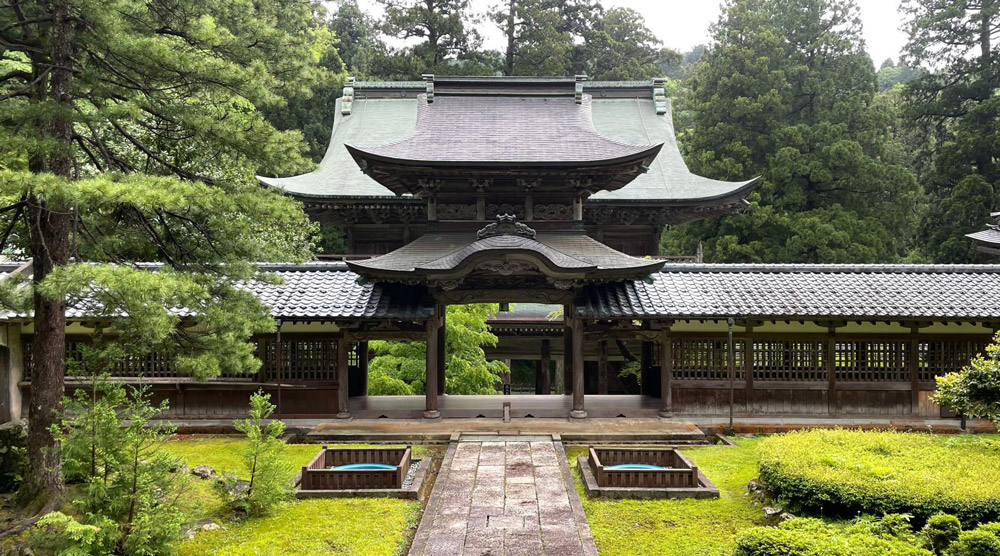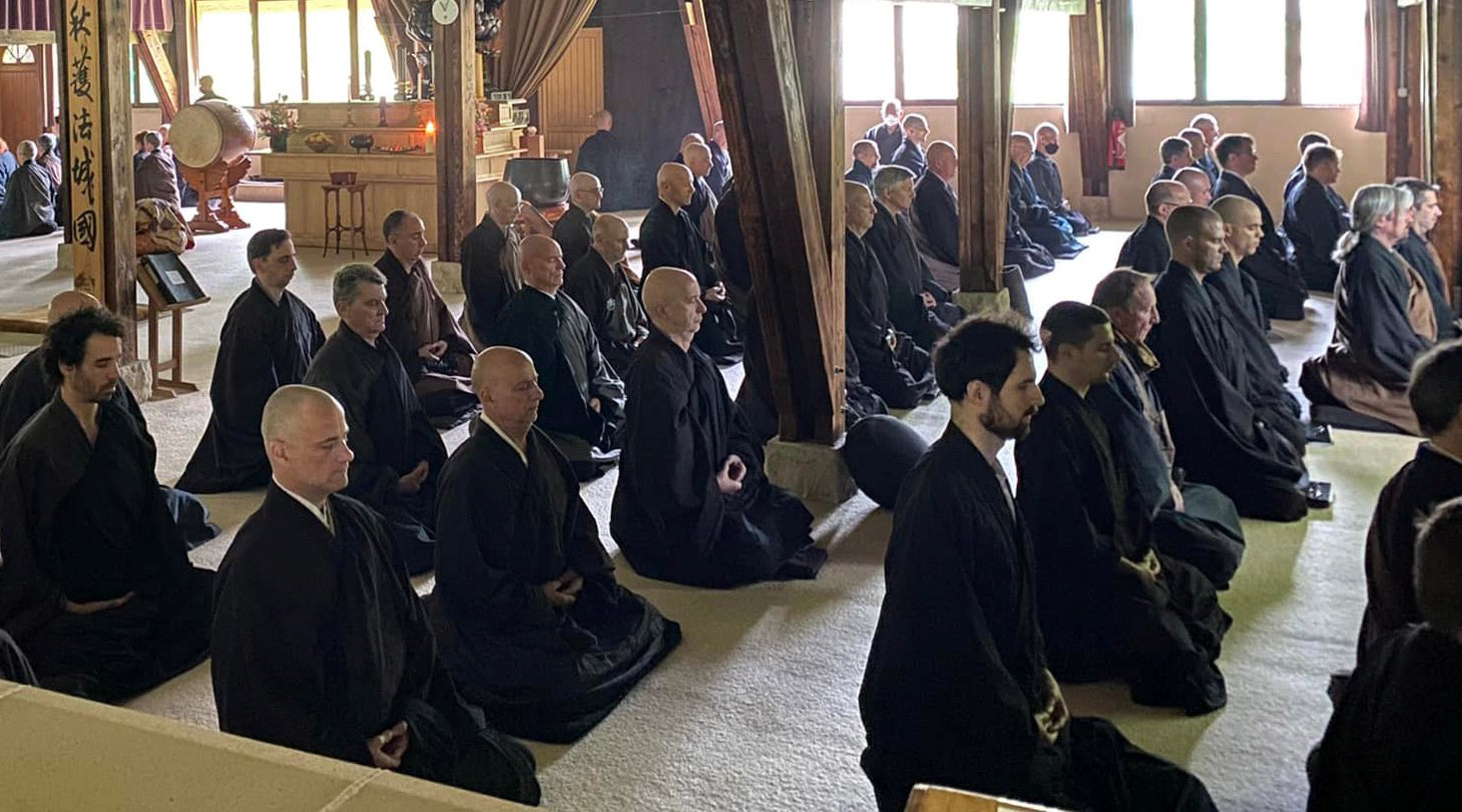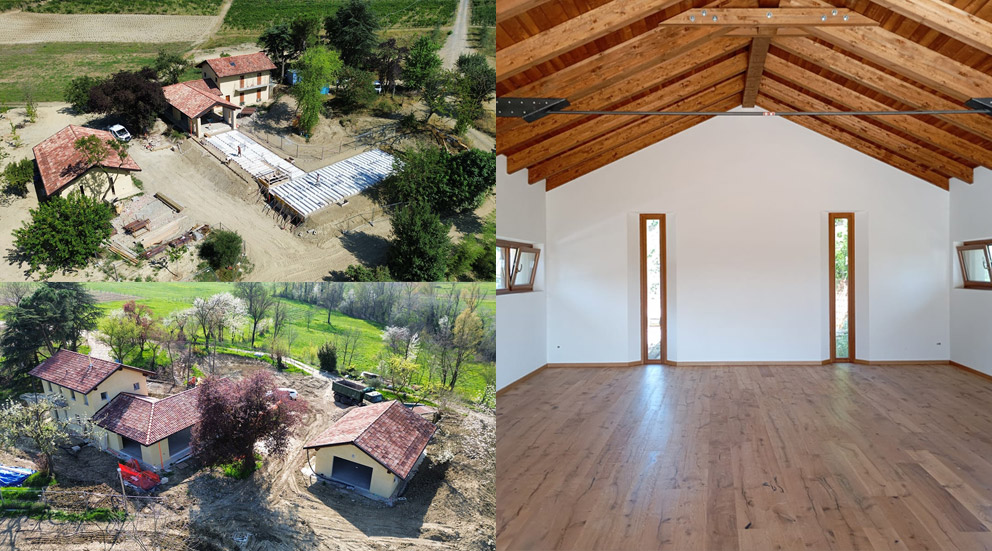A temple is, first and foremost, a place of practice. In the Zen tradition, the temple is a space where awareness is cultivated through simple actions: sitting in silence, walking, working, breathing.

Zen temple in Japan
Gyōgenji (pronounced Ghyo-ghen-ji) is a Zen Temple of the Sōtō Zen Buddhist tradition, located on the border between Monferrato and the Langhe hills in northern Italy. Like the great Japanese temples of the Eiheiji and Sōjiji lineages, its main practice is zazen—seated meditation. Sitting without expectations, without fleeing from anything, simply remaining present, rooted in the body, open to what is.
The name of the Temple itself expresses the deep meaning of this place. 行元寺 (Gyōgenji) is composed of three characters:
Gyōgenji can therefore be translated as “The Temple that is the Source and Origin of Practice”—a place where we return to what is essential, to the very beginning of awareness and life.
Coming to this temple means taking the time to stop, listen, and reconnect authentically with oneself and with life. Located in the Langhe hills in Costigliole d’Asti, Gyōgenji is immersed in six hectares of nature: vegetable garden, orchard, beehives, woods, and open spaces dedicated to practice. Here, daily life is interwoven with zazen, manual work, and respect for the environment.

Meditation at the Temple
Gyōgenji Zen Temple is the expression of a concrete need felt by a sincere and dynamic international community. It stands as a powerful example of how personal transformation can lead to a positive impact on the world—a place open to all who sincerely wish to engage in self-study.
Gyōgenji acts as a bridge between the ancient tradition of the Sōtō Zen School and the modern need for peace, spiritual well-being, and a sustainable future.
Today, many people suffer and feel isolated due to physical, mental, or social challenges. Zen practice teaches that suffering often stems from a distorted view of ourselves. We are not defined solely by our thoughts or emotions — our True Self is vast and deeply connected to the universe and all living beings. By reconnecting with this deep source, we realize a great inner freedom.
The new temple buildings are constructed following the principles of green building, using natural and sustainable materials designed for human well-being and environmental respect—a concrete commitment to addressing the climate crisis and living in harmony with nature.

Construction of the Gyōgenji Zen Temple
Built according to bio-architecture principles, the complex includes living quarters for the monks and the spiritual guide, a long refectory with large windows offering a deep sense of connection with the surrounding environment, and a spacious meditation hall called “dojo” characterized by wide windows overlooking the Alps and a roof made of exposed wooden beams.
Around the Temple Grounds:
The temple’s logo depicts the linden flower, a tribute to the deep bond between the temple and the land where it stands, in Costigliole d’Asti. According to local tradition, the name “Costigliole” derives from Corte Costeliolae, later evolved into Costigliolis, with a double reference: to its location on the hills and to the linden tree, once widespread in this area.

The logo is also inspired by the ancient family crests (kamon) of Japanese noble houses, which over the centuries have been adopted by many Zen temples. In particular, it evokes the emblems of the two main monasteries of the Sōtō tradition: Sōjiji and Eiheiji.
A simple symbol that weaves together the local history with the spiritual heritage of the Temple.